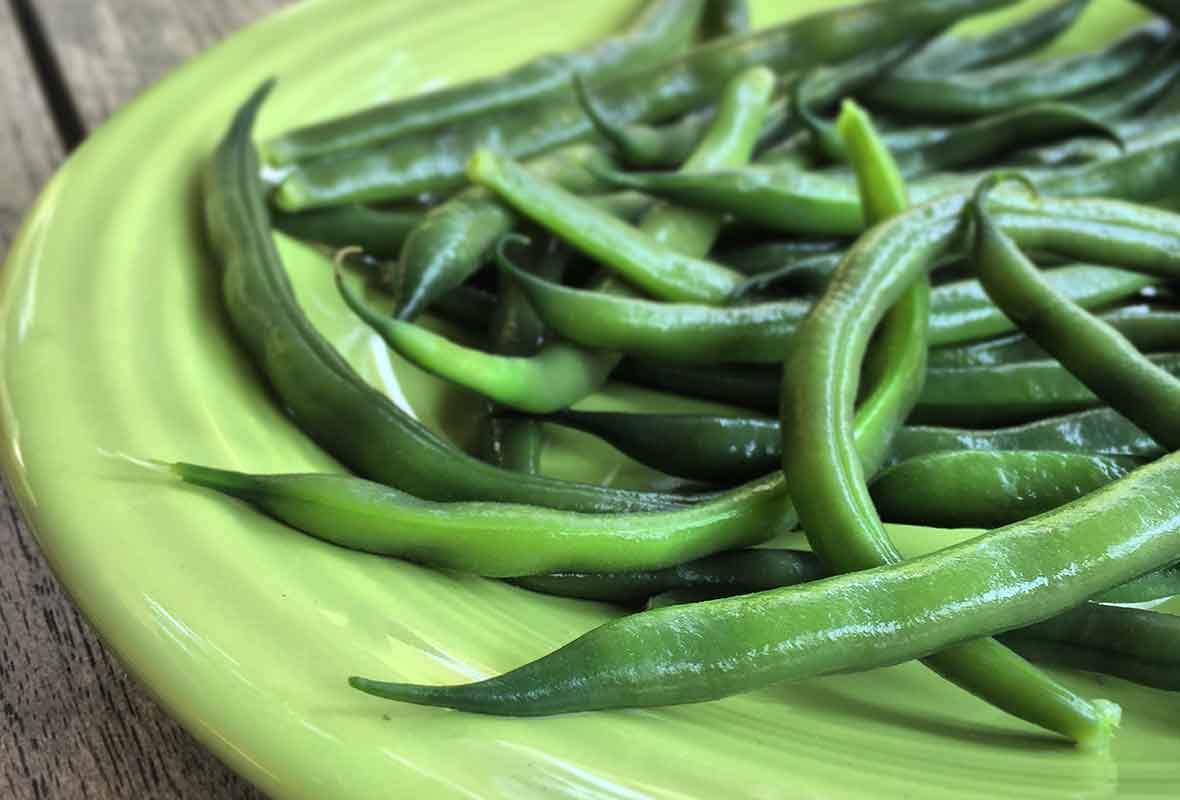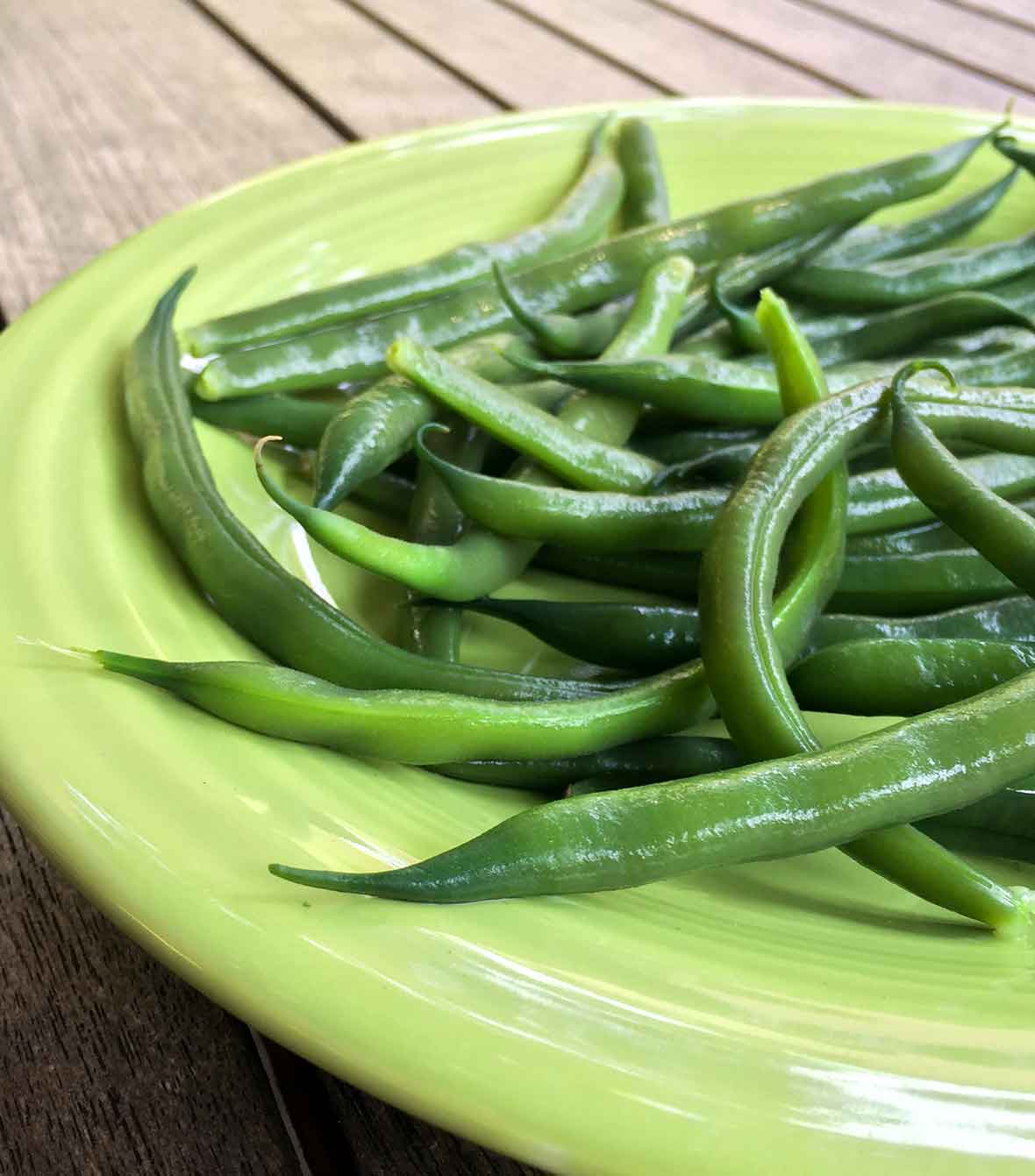
My beans are gay. Let me explain.
This morning I was messing around with Facebook Live Streaming. You know, that new thing where you point your phone’s camera at yourself and hope a lot of people will watch your antics. But I actually had a question I needed advice on from my Facebook followers.
You’ll see from the video above that I accidentally planted Royal Burgundy Bush Beans. I say “accidentally” because 1.) I thought I had planted pole beans (and was desperately trying to make them climb—which the plants, for some inexplicable reason, refused to do), and 2.) I didn’t consider the color purple even when there was a basket of plump purple beans on the package. I figured it meant Burgundy as in Burgundy, France, or, you know, Burgundy, Wisconsin. (Is there a Burgundy, Wisconsin?)
But what I found this morning when I was weeding were dozens of gorgeous purple beans! I mean Prince-worthy purple beans. I was shocked and excited. So at breakfast I risked public ridicule and, while unkempt and unshaved, I pulled out my phone, started streaming and asked my followers for suggestions for how to cook these jewel-toned gems. To my dismay, what I heard again and again was that they turn green when cooked. Impossible! (That should be said with a French accent to go with my French accident.)
I doubted every single person who told me that. Somehow, I felt my beans were better, special, that they’d retain their perfect, flamboyant, outrageous shade of purple. But sadly, as they blanched in the water, the color blanched from them. They ended up looking like pedestrian, run-of-the-mill, supermarket-variety beans.
Bottom line: Royal Burgundy Bush Beans are nothing more than queeny poseur green beans in colorful drag.
I’m as disappointed as when I discovered there was no Santa Claus and that most men grossly overestimate the length of a true, U.S.-standard inch. (Think about it. It’ll hit in you a minute or two.)

Tell me: How do your serve your traitorous purple (read: green green beans)?












Could you pick them when they are very slender, then do them raw, as a salad? I’d add some onion, some celery, some tomato, maybe some yellow or orange pepper, and a garlicky, mustardy vinaigrette. What beautiful colors you’d have to enjoy!
Mary, that’s my next tact. Raw and in a salad. We’ll see.
Those are some nice lookin’ beans. When I want to retain the purple, I slice them very thinly, on a very sharp diagonal, and as someone else mentioned, dress them with a nice vinaigrette to add to salads–think shaved fresh fennel. I also add them to slaws, sliced on a sharp diagonal. I’ve used some version on tacos, in wraps, on pulled pork, etc. I also toss them into fried rice, after I’ve removed it from the wok. Sometimes they keep their color, sometimes not. I guess it’s a temperature thing. I find that the key to serving them raw, is to thinly slice them. I do however, love them raw with a classic aïoli platter, but I make certain I pick them when they are quite young and tender. The joy of the purple part, is when blanching them, the point at which they lose their color, indicates they are perfectly blanched, a litmus test of sorts. But, really, they are delicious, straight from the garden, in whichever way you choose to enjoy them…and do enjoy them. Loved the video!
Ok, girl. You’re name suits you: You are a goddess. Thanks.
The seed catalogs usually mentions that purple varieties turn green when cooked.
Probably. I just picked these up at the store.